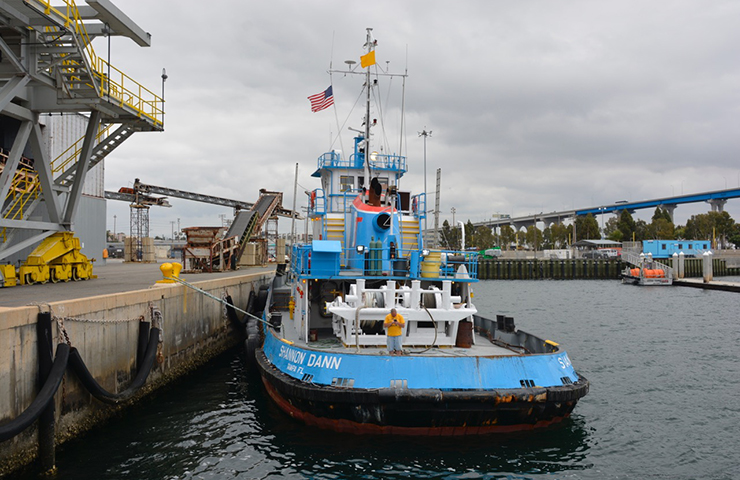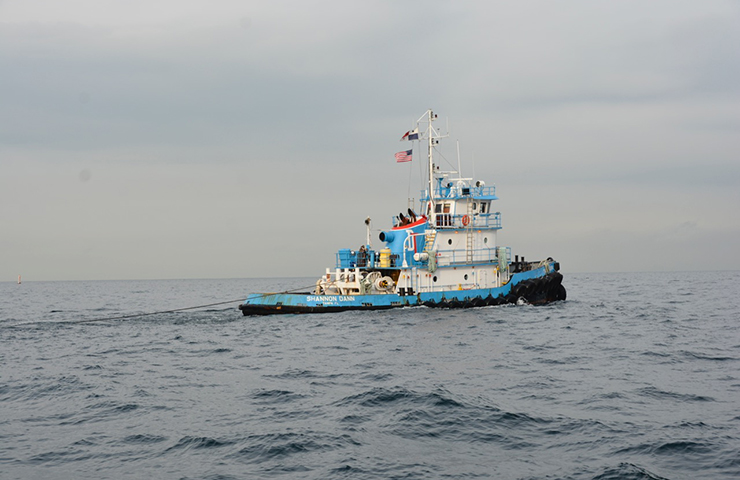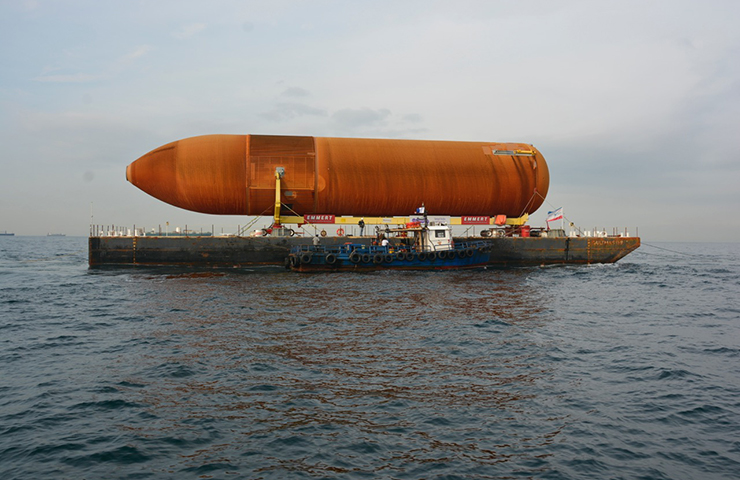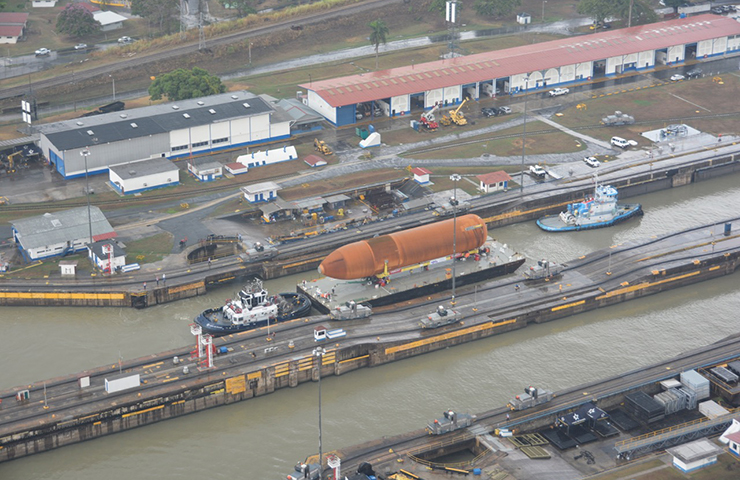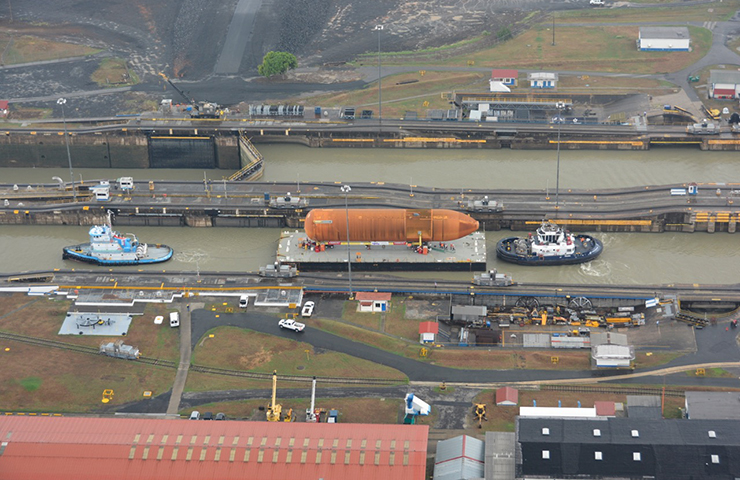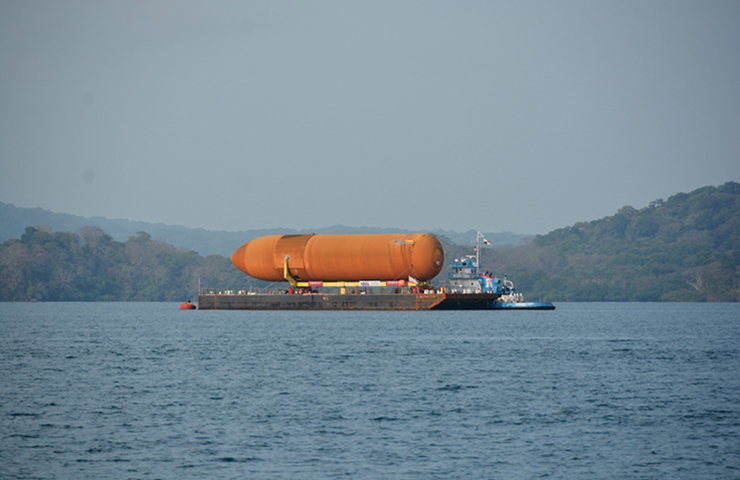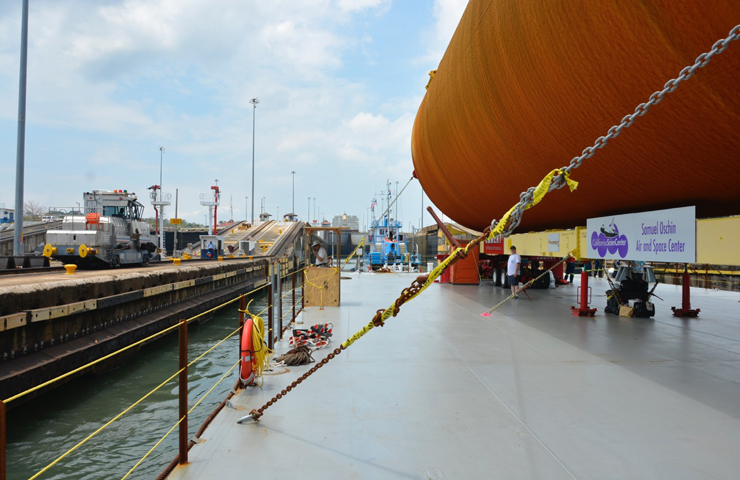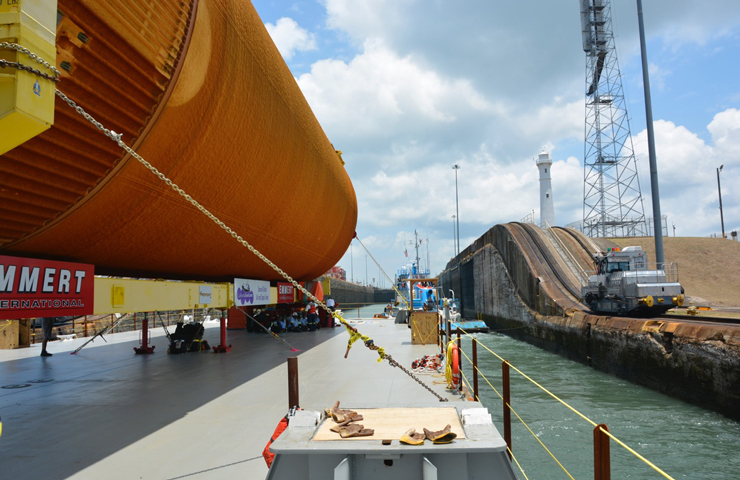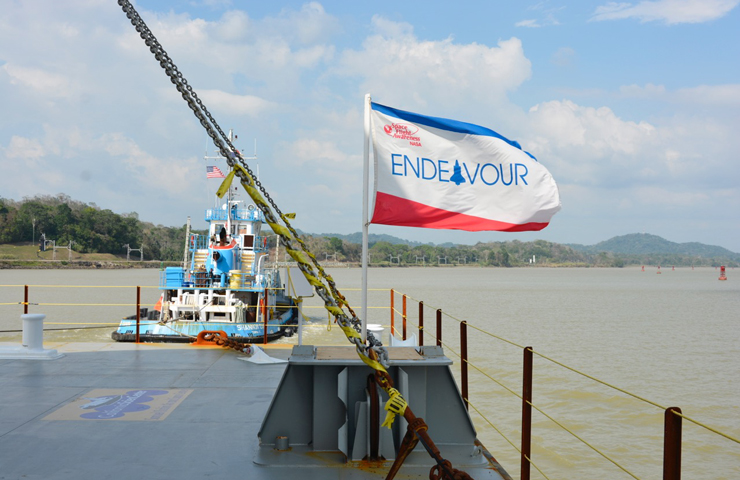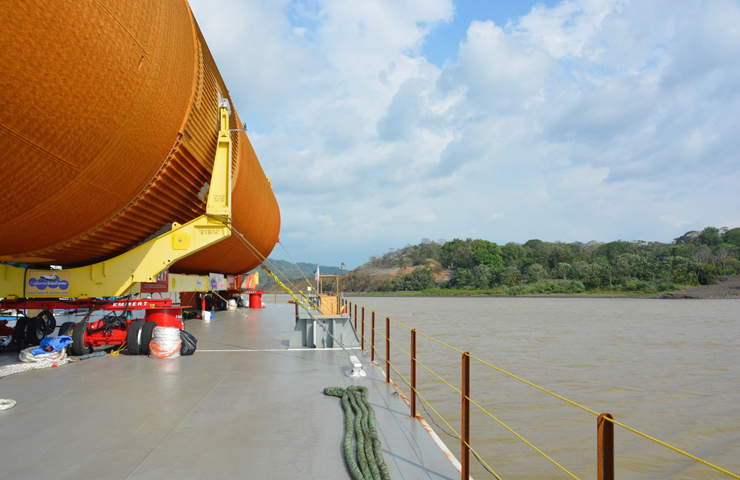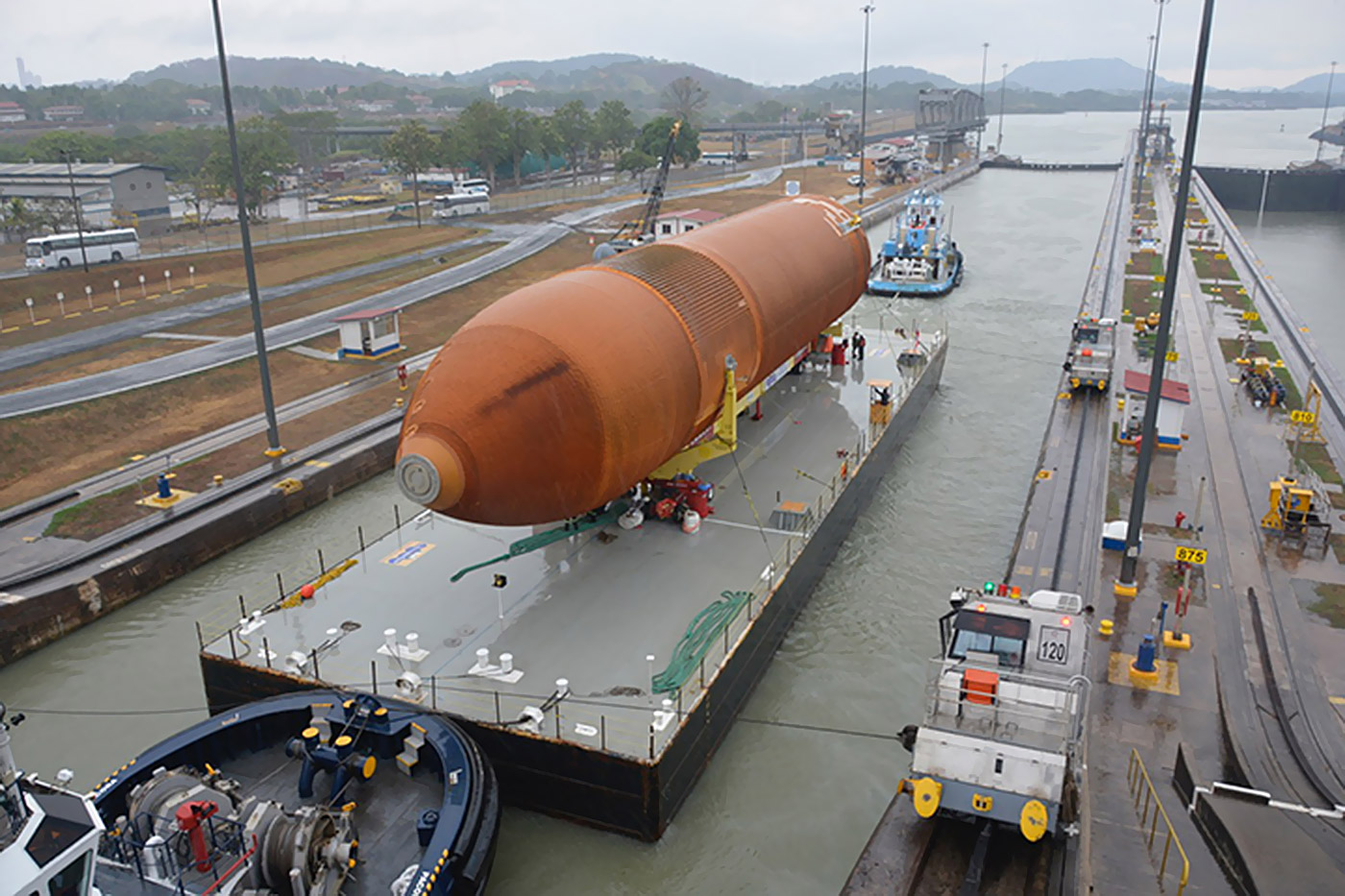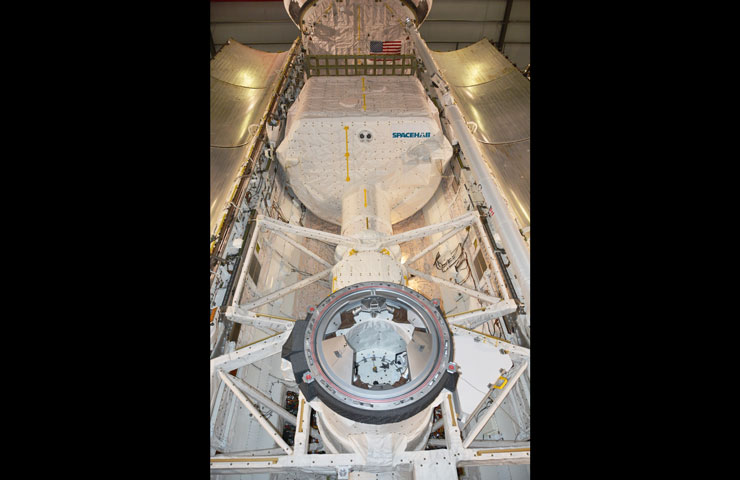ET Come Home: Part 4 ET to the Rescue!
Shannon Dann, towing Gulfmaster 1, arrived at the Tenth Avenue Marine Terminal in San Diego this morning at 0300 to a great deal more attention than expected. At 19:15 on Thursday, Shannon Dann rescued four crewmembers from Maximus, a sport fisherman operating between Puerto Vallarta and San Diego. All are safe, although Maximus was lost.
We need to remove several of the Panama Canal I bits and bollards from Gulfmaster, in addition to instilling the hinges for remaps needed to unload ET-94 at Marina del Rey. All of this work is taking place in San Diego. We expect to depart early Tuesday morning with a scheduled arrival.
ET-94 Status for May 15, 2016 Dennis Jenkins, Project Director, Phase III



